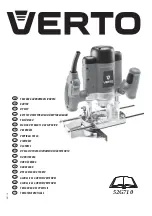
7. Press the power button to shut the system down.
8. Holding the
Ctrl and Esc
keys, press the power button to start the system up. Keep holding the
Ctrl and Esc
keys until the
BIOS
Recovery Menu
page is displayed.
Ensure that the
Recover BIOS
radio button is selected and click
Continue
to start the BIOS recovery.
BIOS recovery using USB drive
NOTE:
Ensure that you have the file type extensions visible in the operating system.
NOTE:
Ensure that you have downloaded the latest BIOS from the Dell support site and save it on your system.
1. Browse to the location of the downloaded BIOS update executable (.exe) file.
2. Rename the file to BIOS_IMG.rcv.
For example, if the file name is PowerEdge_T30_0.0.5.exe, rename it to BIOS_IMG.rcv
3. Copy the BIOS_IMG.rcv file to the root directory of the USB key.
4. If not plugged in, plug in the USB drive, restart the system, press F2 to enter the System Setup, and then press power button to shut
down the system.
5. Start the system.
6. While the system is starting up, press the
Ctrl+Esc
keys while holding the power button until the
BIOS Recovery Menu
dialog box is
displayed.
7. Click
Continue
to start the BIOS recovery process.
NOTE:
Ensure that the Recovery BIOS option is selected in the BIOS Recovery Menu dialog box.
8. Select the path on the USB drive where BIOS recovery file is stored( root directory or "\") and follow the on-screen instructions.
LCD Built-in Self Test
Overview : LCD Built-in Self Test (BIST)
Dell laptop have a built-in diagnostic tool that helps you determine if the screen abnormality you are experiencing is an inherent problem
with the LCD (screen) of the Dell laptop or with the video card (GPU) and PC settings .
When you notice screen abnormalities like flickering, distortion, clarity issues, fuzzy or blurry image, horizontal or vertical lines, color fade
etc., it is always a good practice to isolate the LCD (screen) by running the Built-In Self Test (BIST).
How to invoke LCD BIST Test
1. Power off the Dell laptop.
2. Disconnect any peripherals connected to the laptop. Connect only the AC adapter (charger) to the laptop.
3. Make sure that the LCD (screen) is clean (no dust particles on the surface of the screen).
4. Press and hold
D
key and
Power on
the laptop to enter LCD built-in self test (BIST) mode. Continue to hold the D key, until you see
color bars on the LCD (screen).
5. The screen will display multiple color bars and change colors on the entire screen to red, green, and blue.
6. Carefully inspect the screen for abnormalities.
7. Press
Esc
key to exit.
NOTE:
Dell ePSA upon launch, initiates a LCD BIST first, expecting an user intervention confirm functionality of the
LCD.
ePSA Diagnostics
The ePSA diagnostics (also known as system diagnostics) performs a complete check of your hardware. The ePSA is embedded with the
BIOS and is launched by the BIOS internally. The embedded system diagnostics provides a set of options for particular devices or device
groups allowing you to:
•
Run tests automatically or in an interactive mode
98
Diagnostics
Содержание Vostro 3300
Страница 1: ...Dell Latitude 3300 Service Manual Regulatory Model P95G Regulatory Type P95G001 ...
Страница 26: ...3 26 Major components of your system ...
Страница 27: ...Major components of your system Major components of your system 27 ...
Страница 32: ...Installing the base cover 1 Align the base cover and place it on the computer 32 Disassembly and reassembly ...
Страница 46: ...6 Gently remove the keyboard cable from underneath the keyboard 46 Disassembly and reassembly ...
Страница 49: ...2 Tuck in the keyboard cable and route it along the touchpad bracket Disassembly and reassembly 49 ...
Страница 50: ...3 Press the keyboard until it clicks in place 50 Disassembly and reassembly ...
Страница 107: ...Diagnostics 107 ...











































